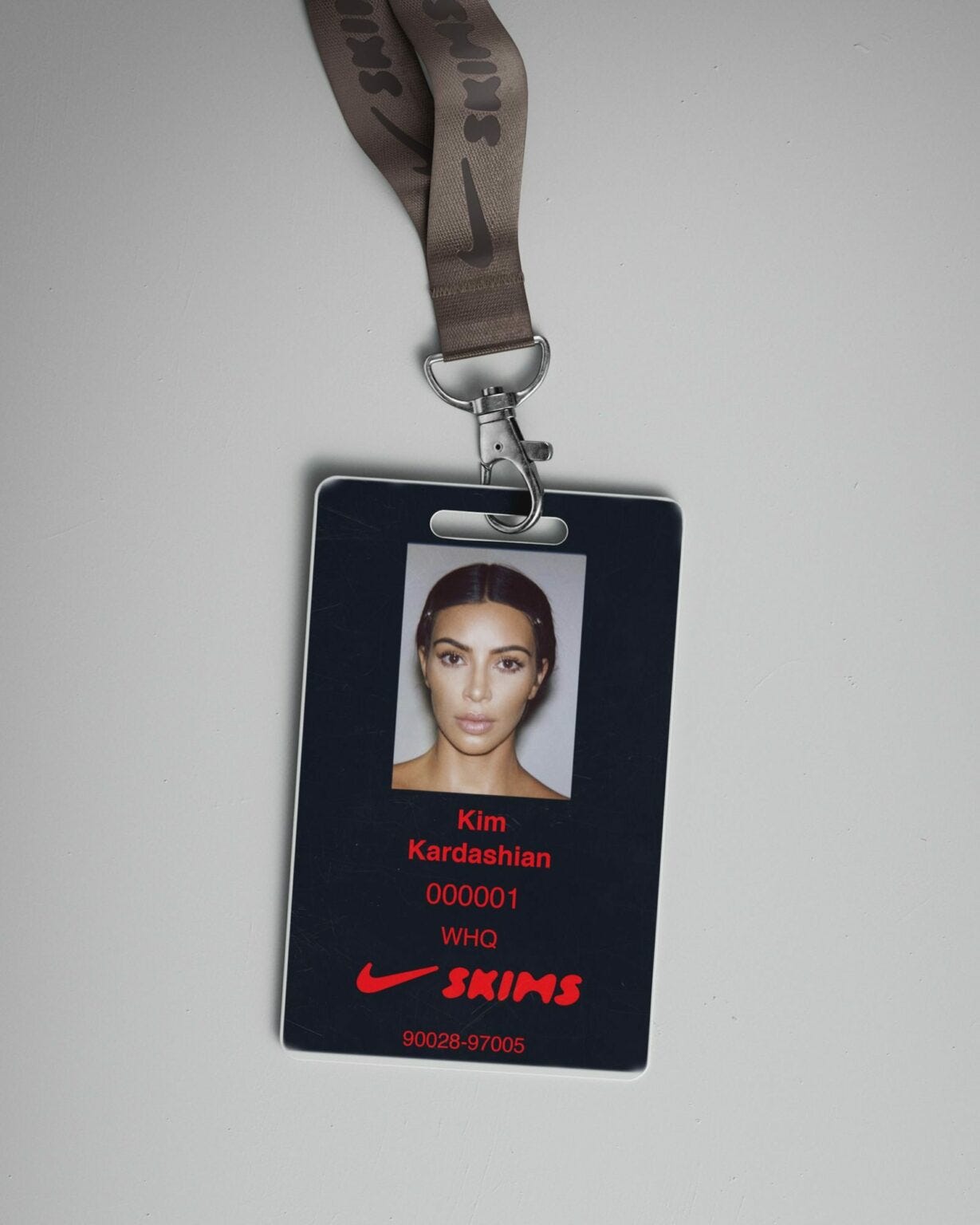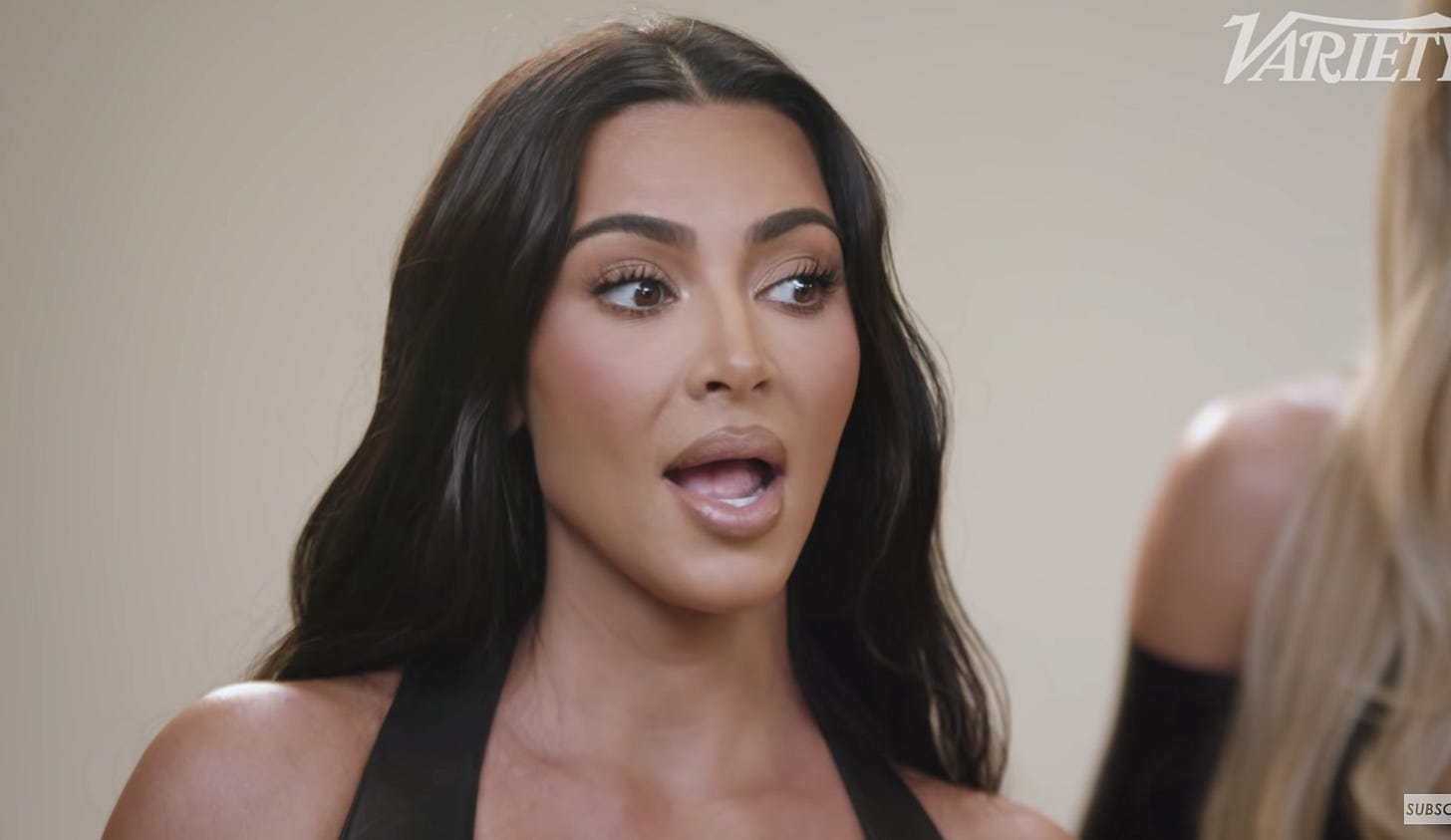Both Nike’s and Kim Kardashian’s stocks are down so in a shrewd attempt to stay relevant, they’ve decided to collaborate on NikeSKIMS, ready to sculpt our saggy rumps this Spring. It reeks of desperation, and it's a match made in fossil fuel hell.
In a quote that feels like it’s been picked from 2018, the “body obsessed” Kim says of the partnership: "Nike and SKIMS share a deep commitment to innovation, inclusivity and pushing boundaries, driven by an unwavering belief in the power of women”. International Women’s Day must be around the corner. Let’s take a peek into Nike and SKIMS’ respective “deep commitment” to (some) women.
The majority of the people who make our clothes are women, mostly women of colour who earn poverty wages. On average, it takes a Big Fashion CEO 28 minutes to amass what a garment worker in Bangladesh earns in an entire year, and Nike’s track record of worker rights abuses is extensive and tragic. In 2020, one of Nike’s factories in China was alleged to be using the forced labour of hundreds of young Uyghur women. Nike claimed they “did an audit”, but there is little evidence to suggest it ever took place. Furthermore, 1,284 women workers in Cambodia making clothes for Nike were laid off without warning. They are still owed over $1.4M in severance pay, a debt that despite record-low stocks, Nike can absolutely afford.
In 2022, Kim had some stern words for women in business, with her viral “Get your fucking ass up and work”. During this time, SKIMS garment makers in Myanmar were forced to work overtime without pay, and if they didn’t meet quotas they wouldn't get paid at all. In 2024, fashion advocacy group Remake launched their annual accountability report, which scores the largest global clothing brands on climate justice-related issues, including worker wages and labour rights, and SKIMS scored lower than Shein.
Nike’s sustainability pledges are empty but extensive in comparison to the few lines you’ll find on SKIMS’ website, whose most infamous nod to the climate crisis was a satirical advert for their controversial nipple bra (ill advised and frustratingly brilliant in equal measure). On the surface, Nike’s claim to divert “100% of their waste from landfill” in their latest impact report sounds progressive, but a deeper dive reveals that this stat only refers to the “manufacturing scraps” in their finished products.
As always, it’s oversupply that is the elephant in the room which very few multinational apparel brands are willing to address. No amount of recycled material can solve the mountain of clothing waste in the Atacama desert, which has reached such high proportions that it’s now visible from space. SKIMS sold a whopping 3 million items in its inaugural year, and although we don’t have exact figures, we do know that Nike is the North American brand most often found polluting the beaches of Accra in Ghana.
The NikeSKIMS collaboration is doubtless an attempt to compete with the (unethical but oh-so “aesthetic”) sportswear brands du jour like Lululemon and Andola, and a strategic attempt to boost profits and stay relevant under the (exhausting) guise of “female empowerment”. In the meantime, you can find me training to fight the billionaires in the leggings I already own. Please join me, I’d love to have you on my team.
TLDR: What We Can Expect From NikeSKIMS
1. Worker Exploitation
2. A lot of polyester
3. Grey
4. Beige
5. Desperation
6. A marketing campaign that looks a bit like the latest iPhone
What To Buy Instead
The activewear you already own is fine (and your behind looks great), but if you really need to buy new I’d recommend prioritising second-hand first. Try scouring sites like eBay, Vinted and Vestiaire Collective and use the filters to find pieces in your size, local to you. Due to oversupply and large scale influencer gifting, there are a lot of brand new and unworn sportswear pieces - with tags still intact. If you find a brand you love and can’t find them secondhand, email the brand directly to ask questions about their ethics.
Questions to ask sportswear brands
1. Do you pay your workers fair living wages?
2. How often do you visit your factories?
3. Are your workers unionised?
4. How many items does your brand produce annually? (and say you won’t buy from them until they sign the Speak Volumes campaign).
Thank you for being here and for supporting my work.
In love and rage,
Venetia






